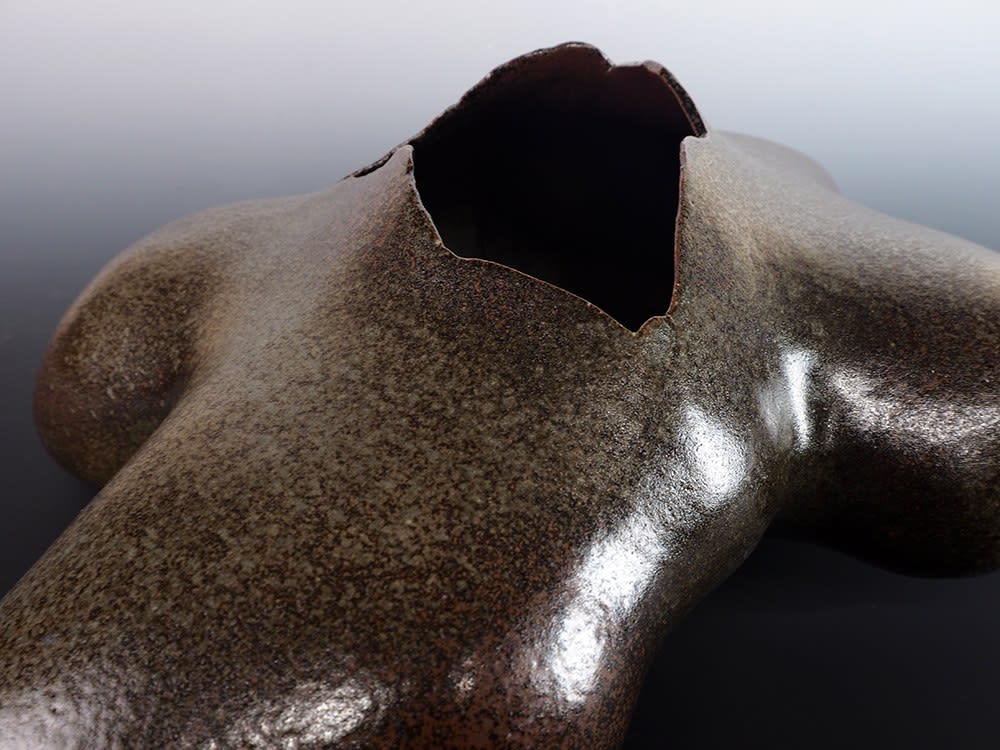Takiguchi Kazuo 滝口和男
Iron Glazed Sculpture Untitled 無題
Glazed stoneware
H9” x W27” x D14”
Further images
In his essay in Takiguchi Kazuo critic Kaneko Kenji refers to Takiguchi’s “taut rotundity” a particularly apt and descriptive phrase. The work is slab-constructed stoneware with a rich, black iron...
In his essay in Takiguchi Kazuo critic Kaneko Kenji refers to Takiguchi’s “taut rotundity” a particularly apt and descriptive phrase. The work is slab-constructed stoneware with a rich, black iron glaze, the organic forms calling to mind the work of Henry Moore. The surface is very beautiful, dynamic and sensitive, but the real story is the sense of internal action, with lots of movement and air inside the pieces, as if they were inhabited by an animal pumping and jumping to get out. The shapes are quite unexpected, with unusual, seemingly random bumps and protrusions, which nevertheless resolve into a harmonious whole.
Robert Yellin once said about Kazuo's pieces: "I thought of Takiguchi Kazuo's organic-looking pots, and I could easily imagine a Takiguchi work set out on the grass, creating the feeling of a ceramic sculptural garden." This image is apt.
This work was shown in Takashimaya Tokyo in March of 2001 during a solo exhibition. In June 2007, was Exhibited in the "Black and White" show at Gallery Pahk.
Robert Yellin once said about Kazuo's pieces: "I thought of Takiguchi Kazuo's organic-looking pots, and I could easily imagine a Takiguchi work set out on the grass, creating the feeling of a ceramic sculptural garden." This image is apt.
This work was shown in Takashimaya Tokyo in March of 2001 during a solo exhibition. In June 2007, was Exhibited in the "Black and White" show at Gallery Pahk.









